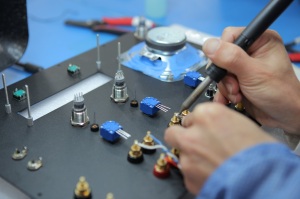 In February, we looked at some of the common DFM mistakes that SAI helps its customers eliminate. Here are some of the common mistakes to avoid in design for assembly (DFA):
In February, we looked at some of the common DFM mistakes that SAI helps its customers eliminate. Here are some of the common mistakes to avoid in design for assembly (DFA):
- Cable specification issues: IPC guidelines require specific wire gauges be used with specific terminal types. Use of the wrong wire gauge can result in wires coming loose or breaking off the terminal during normal use or maintenance activities. Lack of specifications such as failure to list tolerances or clarifying whether the cable length includes the connector or is simply the inside length are also issues.
- Assembly routing: The order in which cabling and tubing is assembled can impact both efficiency and product performance. An efficient routing sequences the cable harness assembly steps in a way that does not require the operator to have to work around previously installed harnesses. When tubing carrying air liquid is also involved, it is important to ensure the tubing is not accidently crimped by either its placement location in relation to harnesses or a harness tie down.
- Documentation formatting: the more complex a product, the more important electronic documentation becomes because it enables sorting and searching within the files. When documentation such as bills of materials (BOMs) are submitted as PDFs, they must be converted via optical character recognition (OCR) scanners. This can add errors to documentation. The preferred format would be an Excel file or a comma or tab-delimited text file.
- Missing BOM items: Sometimes consumables such as adhesives, zip ties or Lock-tite are not listed as a line item on the BOM. In addition to the quoting inaccuracy this can cause, it also can create confusion on the preferred product to use.
- Missing test and programming requirements: Sometimes functional test and programming requirements are listed only in the test instructions or not all steps are written down. There are often “tribal knowledge” issues that aren’t always conveyed to the contract manufacturer in testing.
